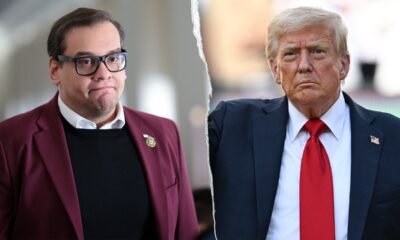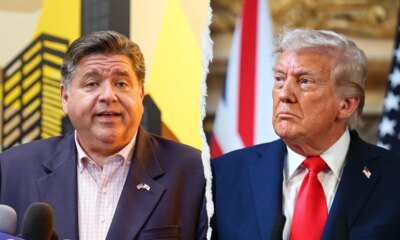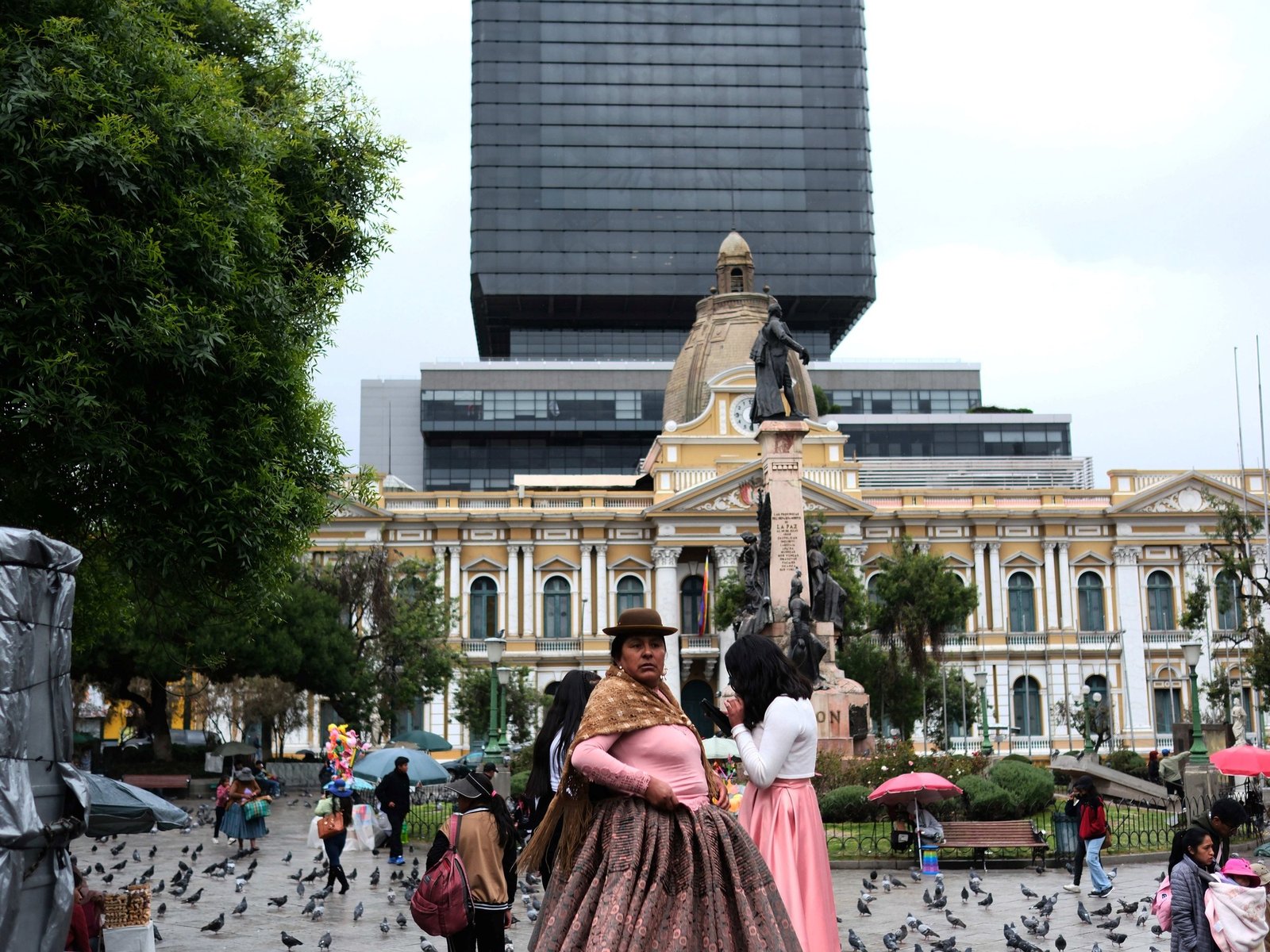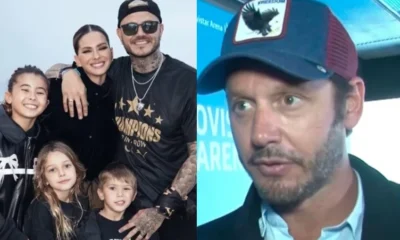INTERNACIONAL
Biden’s auto-pen pardons disturbed DOJ brass, docs show, raising questions whether they are legally binding
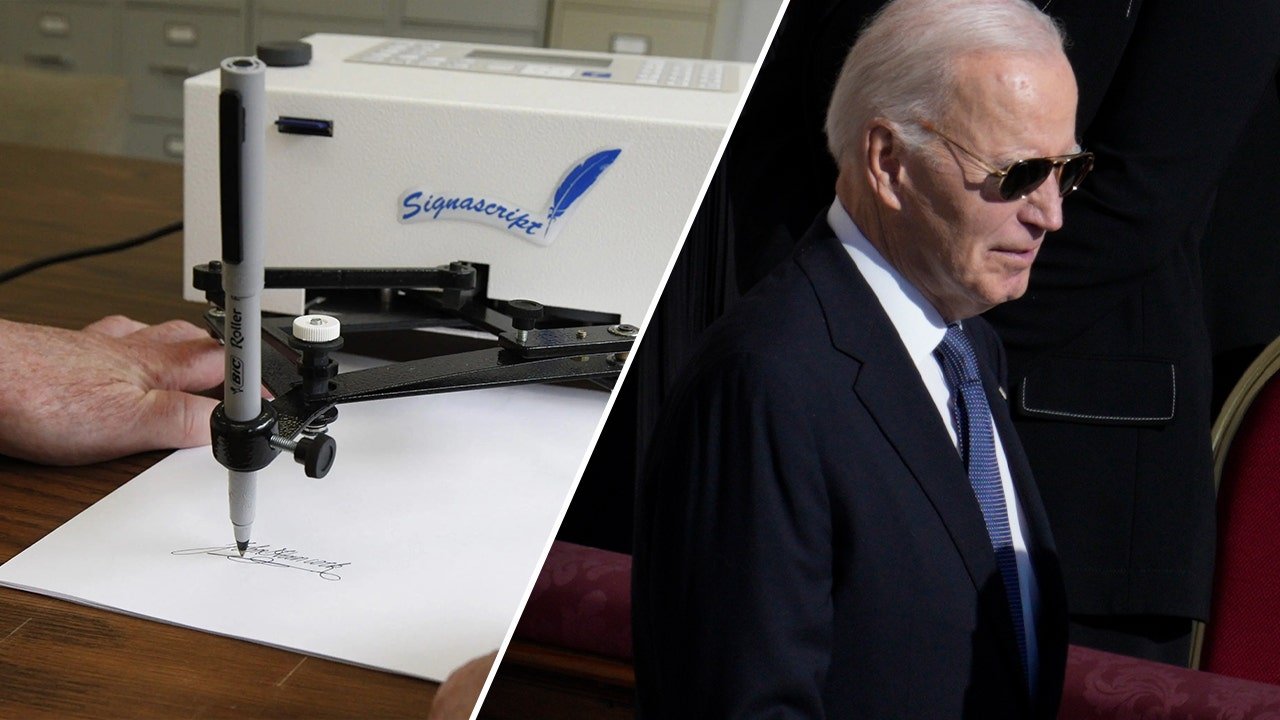
NEWYou can now listen to Fox News articles!
New documents and communications between Biden White House staff and career officials at the Justice Department prompted scrutiny of the legality of former President Joe Biden’s thousands of last-minute pardons.
The Oversight Project shared documents obtained from the Trump DOJ with Fox News Digital showing that a career prosecutor warned Biden’s inner circle that the administration’s pardon process was unorthodox and legally troubling.
In the most scrutinized e-mail, then-Assistant Deputy Attorney General Bradley Weinsheimer wrote a group email to several executive office staff members on Jan. 18 asking questions about the more than 2,500 pardons.
«[T]he White House has described those who received commutations as people convicted of non-violent drug offenses. I think you should stop saying that because it is untrue or at least misleading,» Weinsheimer said.
‘SHOULD BE PROSECUTED’: HOUSE REPUBLICANS ZERO IN ON BIDEN AUTOPEN PARDONS AFTER BOMBSHELL REPORT
An autopen, left, and President Joe Biden (Getty Images; Fox News)
«As you know, even with the exceedingly limited review we were permitted to do of the individuals we believed you might be considering for commutation action, we initially identified 19 that were highly problematic,» he continued.
He cited convicts Terrence Richardson and Ferrone Claiborne, who were included in the clemency grants, and noted the DOJ received «voluminous» objections from victims’ families and law enforcement as the men had been «sentenced to life imprisonment for drug trafficking offenses during which a police officer was killed.»
That, according to Oversight Project vice president Kyle Brosnan, shows DOJ was concerned about the «vague» construct of Biden’s pardons and how they appeared to be «illegally delegated» to staff. They also left the DOJ wondering at times which offenses, for people with multiple convictions, were specifically being expunged.
«Later in the email, he was like, ‘Look, I read the statement you put out in the president’s name, saying you’ve released a bunch of non-violent drug offenders. You’ve got murderers on your list today. So I’m trying to figure out what the president wants here for this funky warrant.’»
Discussing other documents received, Brosnan and attorney Sam Dewey cited a spreadsheet of convicts with «offenses described to the Department of Justice» for the second of several «collective» or catch-all warrants.
NEW FOIA ON MIGRANTS POTENTIALLY AVOIDING THE DRAFT COULD OPEN NEW DEPORTATION PREDICATE: ATTORNEYS
«I think it best that we receive a statement or direction from the President as to the meaning of the warrant language,» Weinsheimer wrote to White House staff. «That will allow us to give full effect to the commutation warrant in the manner intended by the president.»
There was ultimately no explanation for what the offenses or the proverbial descriptions were, according to the document tranche, Brosnan said, adding that the DOJ official suggested to Biden staff that «you should stop saying [pardonees were mostly ‘nonviolent drug offen[ders]’] because it is untrue or at least misleading.»
Brosnan explained that a spreadsheet of convicts, said to be attached to one of the e-mails, came from the U.S. Sentencing Commission – and only the president has the power to grant pardons. Treating it otherwise, he said, would amount to an illegal delegation of presidential authority.
BIDEN DEFENDS CONTROVERSIAL AUTOPEN USE FOR MASS CLEMENCY DECISIONS IN NYT INTERVIEW: ‘A WHOLE LOT OF PEOPLE’
To that end, Brosnan pointed to New York Times interviews with Biden in July, wherein the paper reported, «Mr. Biden did not individually approve each name for the categorical pardons that applied to large numbers of people, he and aides confirmed.»
«Rather, after extensive discussion of different possible criteria, he signed off on the standards he wanted to be used to determine which convicts would qualify for a reduction in sentence.»
«High-profile» pardon recipients like retired Gen. Mark Milley were discussed directly with aides.
«Biden did not pardon individual people, but laid out categories of types of people to release and left it to the staff to figure out who meets that criteria,» Brosnan said, adding that many warrant documents were also found to be auto-penned.
CLICK HERE TO GET THE FOX NEWS APP
Dewey told Fox News Digital the situation was «worse than that» – because «literally no one,» including DOJ officials, «understands what the [aforementioned pardon] criteria are.»
«You generally don’t see people write emails like this,» he said. «This isn’t a ‘CYA’ – this is an ‘I’m going to do a Pontius Pilate routine because this is a drug deal and I want to make very sure it doesn’t come back on me.»
The entire situation, Dewey said, also has a precedent for such pardons being considered «invalid» going back to «before we were even a country.»
«If the pardon is invalid, it falls, and then you proceed as if there was no pardon.»
Biden previously defended his pardons, saying that he wanted to undo «disproportionately long sentences compared to the sentences they would receive today under current law, policy, and practice.»
«[This] clemency action provides relief for individuals who received lengthy sentences based on discredited distinctions between crack and powder cocaine, as well as outdated sentencing enhancements for drug crimes,» Biden said in a statement.
«This action is an important step toward righting historic wrongs, correcting sentencing disparities, and providing deserving individuals the opportunity to return to their families and communities after spending far too much time behind bars.»
Fox News Digital reached out to DOJ and a representative for Biden for further comment.
The Associated Press contributed to this report.
justice department,joe biden,white house,crime world,police and law enforcement
INTERNACIONAL
Elecciones en Bolivia: los candidatos Jorge “Tuto” Quiroga y Rodrigo Paz se disputan la presidencia en un histórico balotaje

Bolivia celebra este domingo una histórica segunda vuelta presidencial, la primera en su historia, en la que los electores deben elegir entre el ex presidente Jorge “Tuto” Quiroga y el senador Rodrigo Paz. El resultado marcará el inicio de una nueva etapa política y económica dejando atrás casi dos décadas de gobiernos del Movimiento al Socialismo (MAS).
En los comicios de agosto pasado, donde también se eligió al nuevo Parlamento, ninguno de los candidatos alcanzó el porcentaje necesario para imponerse en primera vuelta: Paz, del Partido Demócrata Cristiano (PDC), obtuvo el 32,06%, y Quiroga, de la alianza Libre y presidente boliviano entre 2001 y 2002, logró el 26,70%.
La segunda vuelta, contemplada en la Constitución vigente desde 2009, establece que la Presidencia y Vicepresidencia recaen en la fórmula que obtenga más del 50% de los votos válidos, o al menos el 40% con una diferencia de diez puntos sobre el siguiente.
Este 19 de octubre, por primera vez será utilizado este mecanismo para definir quién liderará el país durante el próximo quinquenio; resultará ganador el binomio que logre la mayoría de los votos emitidos.
A continuación, la cobertura minuto a minuto:
Los aspirantes a la Vicepresidencia de Bolivia
El candidato junto a Paz es Edmand Lara, un ex policía de 40 años conocido en TikTok como “el capitán Lara”, donde promueve valores morales y se opone al poder estatal. Su figura ha generado controversia por insultar a rivales y acusar a periodistas y medios de ser “prensa vendida” sin aportar pruebas.
Por su parte, el compañero de fórmula de Quiroga es Juan Pablo Velasco, un emprendedor de 38 años vinculado a startups de delivery y movilidad. Velasco enfrentó críticas por antiguos tuits con expresiones racistas contra la población andina, cuya autoría negó.
Balotaje en Bolivia: Rodrigo Paz y Jorge Quiroga se disputan la presidencia de un país en crisis tras dos décadas del MAS en el poder
Más de siete millones de bolivianos están convocados este domingo para participar de segunda vuelta sin precedentes. Los dos candidatos plantean un giro hacia políticas liberales para recuperar la estabilidad económica

Este domingo, Bolivia celebra la segunda vuelta electoral para elegir entre los dos candidatos mejor posicionados en los comicios de agosto, el senador Rodrigo Paz y el ex presidente Jorge “Tuto” Quiroga (2001-2002). El ganador dirigirá el país durante los próximos años en un contexto complejo: Bolivia se encuentra en recesión con proyecciones negativas para los próximos años y con una profunda crisis económica a consecuencia del desplome de la industria del gas que fue su principal fuente de ingresos.
Cómo llegan los candidatos presidenciales a la segunda vuelta electoral
Paz se presenta por primera vez como aspirante al Ejecutivo, tras una trayectoria política de dos décadas que incluye cargos como diputado, alcalde de Tarija y actualmente senador. Quiroga, en cambio, busca una vez más la presidencia de su país, luego de haber ejercido el cargo por un año entre 2001 y 2002 tras la renuncia de Banzer.
El líder del PDC logró atraer a votantes insatisfechos con el MAS y cuenta con respaldo de sectores moderados, mientras que Quiroga tiene el apoyo de empresarios y electores que valoran su experiencia y conexiones internacionales.
La Unión Europea envió 120 observadores a Bolivia para supervisar las elecciones

El bloque europeo desplegó 120 observadores en las nueve regiones del territorio boliviano con el objetivo de inspeccionar la segunda vuelta presidencial. La misión, liderada por Davor Ivo Stier, busca monitorear el desarrollo electoral y resguardar la integridad del proceso.
El contingente está compuesto por miembros del Parlamento Europeo, diplomáticos de los países de la Unión Europea presentes en Bolivia y observadores de Canadá, Noruega y Suiza. Todos participaron en una capacitación en La Paz sobre el contexto local, seguridad y la metodología de observación establecida.
El TSE de Bolivia advirtió sobre las sanciones “legales y económicas” que recibirán los votantes que no participen del balotaje
El proceso electoral cuenta con la presencia de observadores internacionales y medidas estrictas para asegurar su legalidad. El organismo boliviano aseguró que podrá multar a quienes no emitan su sufragio
El Tribunal Supremo Electoral (TSE) de Bolivia advirtió este sábado, a horas de la segunda vuelta electoral, la imposición de “diversas sanciones” a quienes no acudan a votar durante el balotaje presidencial de este domingo que enfrenta a los candidatos Jorge “Tuto” Quiroga y Rodrigo Paz.
Las multas por incumplir deberes electorales en los comicios bolivianos

- Si una persona designada como jurado no se presenta, debe pagar 1.375 bolivianos (unos 200 dólares), equivalente al 50% del salario mínimo nacional.
- Irse sin permiso del recinto, 825 bolivianos.
- Quienes no voten o no presenten su certificado de sufragio en los 90 días posteriores en las entidades bancarias deberán abonar 550 bolivianos y quedarán impedidos de realizar trámites, trabajar en el sector público o solicitar pasaporte por tres meses.
- Circular en un vehículo que no tenga autorización del órgano electoral lleva a la retención del rodado hasta la medianoche del lunes 20 de octubre y una multa de 550 bolivianos.
El horario de votación del balotaje
Las mesas estarán abiertas a partir de las 08:00 y hasta las 16:00. Aunque el horario de inicio y cierre es estricto, si hay fila en las mesas, se atenderá a los ciudadanos que estén formados aguardando por su turno para emitir el sufragio.
Qué sistema de votación utilizará Bolivia para contabilizar los sufragios

El Gobierno boliviano volverá a utilizar el Sistema de Transmisión de Resultados Preliminares (Sirepre) para informar al cierre de la jornada electoral del domingo. El proceso estará acompañado por misiones de observación nacional e internacional, entre ellas las de la Unión Europea (UE) y la Organización de Estados Americanos (OEA), que ya participaron en la primera vuelta.
Desde el jueves rige el periodo de silencio electoral y, desde el viernes, el “auto de buen gobierno”, que restringe aglomeraciones, reuniones masivas y la venta de bebidas alcohólicas. Este domingo, además, se prohibirá la circulación de todo vehículo sin autorización del órgano electoral.
Tras 20 años de gobierno de izquierda, Bolivia está a punto de dar un giro hacia la derecha
La pregunta es: ¿a qué velocidad?

Cuando Rodrigo Paz llegó a su último acto de campaña en El Alto, la extensa ciudad situada en una meseta que domina la capital boliviana, La Paz, la multitud llevaba horas bajo el sol abrasador. Por suerte, había acudido preparada con cajas de cerveza y un picnic a base de papas. “Los pueblos indígenas somos mayoría y volveremos a ganar”, grita un hombre bien alimentado, lo que provoca que todos los presentes entonen el grito de victoria aimara: “¡Jallalla!“.
horizontal,politics,vote
INTERNACIONAL
Trump administration freezes $11 billion in blue state infrastructure projects, blames Democrats for shutdown
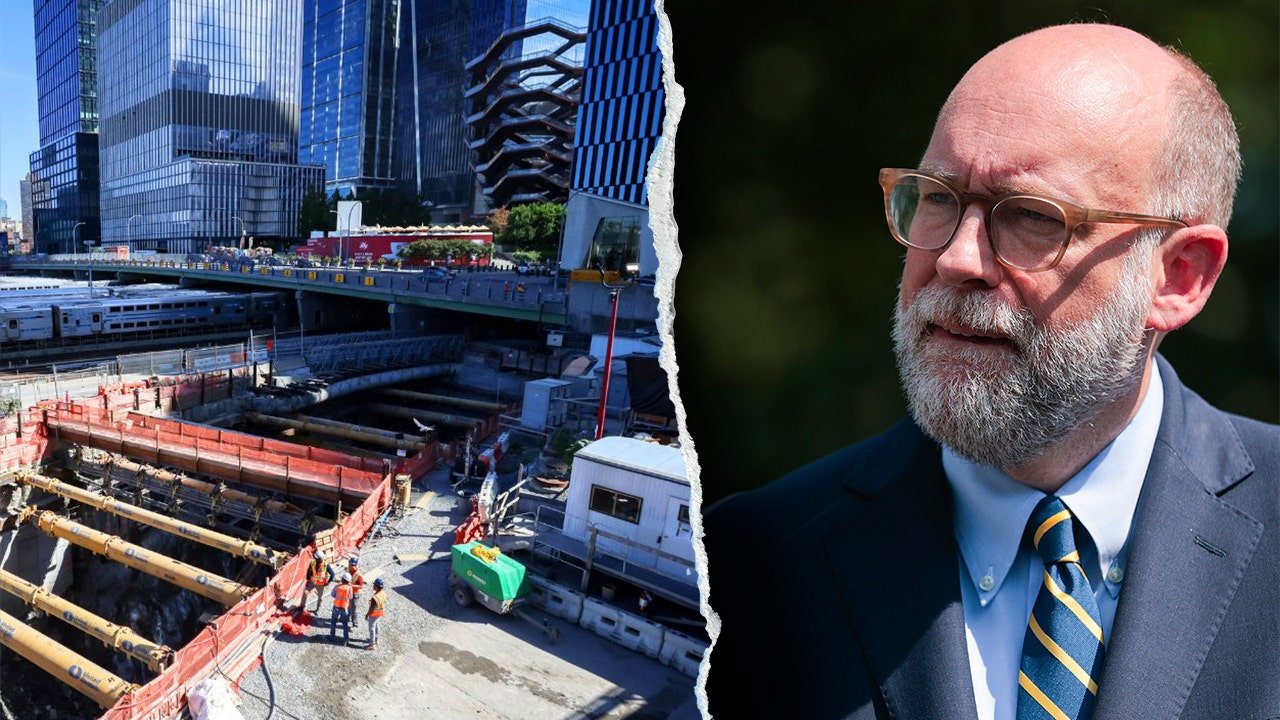
NEWYou can now listen to Fox News articles!
The Trump administration is freezing $11 billion in federal funds earmarked mostly for Democrat cities’ infrastructure projects as the government shutdown rolls on with no end in sight.
Russell Vought, the director of the Office of Management and Budget (OMB), made the announcement Friday while pinning the shutdown on Democrats, whose actions he said left him with no choice but to halt the spending.
«The Democrat shutdown has drained the Army Corps of Engineers’ ability to manage billions of dollars in projects,» Vought posted to X.
Office of Management and Budget Director Russell Vought, right, speaks with reporters outside the West Wing of the White House on July 17, 2025, as workers continue construction on New York’s Hudson Tunnel Project. (Anna Moneymaker/Getty Images; Michael Nagle/Bloomberg via Getty Images)
TRUMP IS USING THE GOVERNMENT SHUTDOWN TO DO SOMETHING NO PRESIDENT HAS EVER DONE
«The Corps will be immediately pausing over $11 billion in lower-priority projects and considering them for cancellation, including projects in New York, San Francisco, Boston, and Baltimore. More information to come from the Army Corps of Engineers.»
New York will be hit hardest, with about $7 billion being frozen. Other affected projects are in Illinois, Maryland, Oregon, New Mexico, New Hampshire, Massachusetts, New Jersey, Rhode Island and Delaware, the OMB said, according to Reuters.
The money includes $600 million for two aging, federally owned bridges spanning the Cape Cod canal in Massachusetts, which are slated for replacement and carry millions of travelers annually.
The OMB told the outlet President Donald Trump «wants to reorient how the federal government prioritizes Army Corps projects.»
New York Gov. Kathy Hochul responded to Vought on X, simply writing, «Good luck with that, Russ. We’ll be in touch.»
Maryland Rep. Kweisi Mfume wrote on X that the move is «another example of the Trump Administration placing partisan politics over the welfare of the American people.»
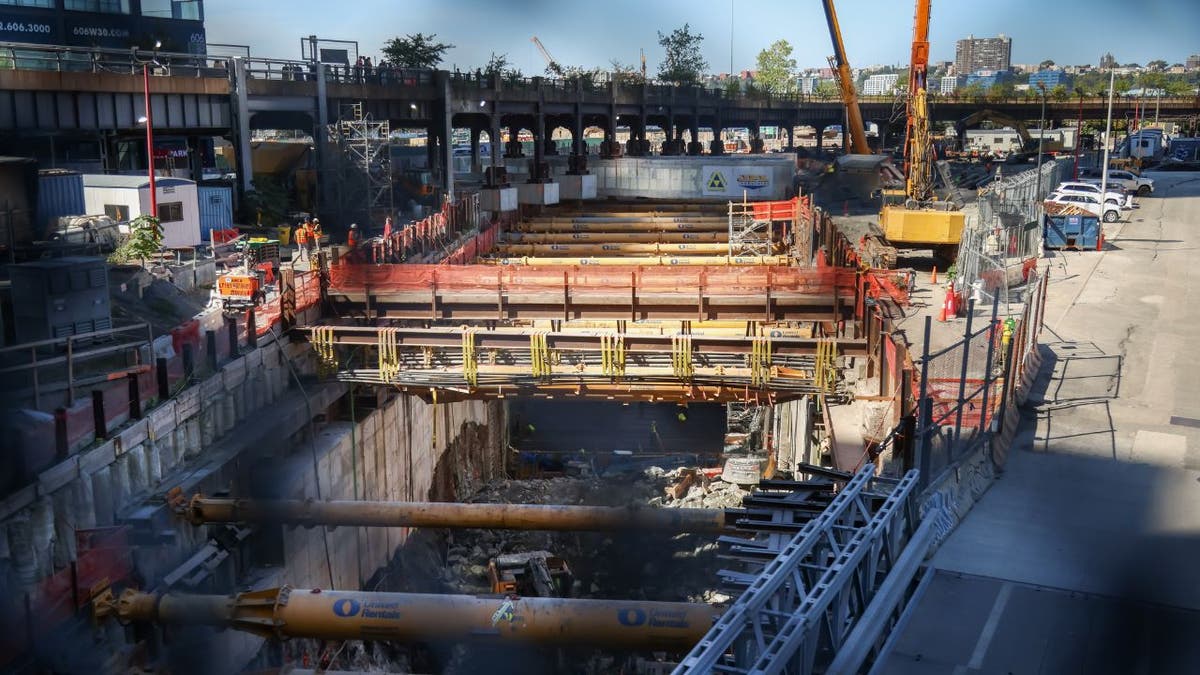
Workers at a construction site for the Gateway Program’s Hudson Tunnel Project in New York City on Oct. 3, 2025. The White House has frozen billions in infrastructure funding, including money for the Hudson Tunnel and Second Avenue Subway during the ongoing budget impasse. (Anna Moneymaker/Getty Images)
WHITE HOUSE ESCALATES SHUTDOWN CONSEQUENCES AS DEMOCRATS SHOW NO SIGNS OF BUDGING: ‘KAMIKAZE ATTACK’
Massachusetts leaders also pushed back, with Gov. Maura Healey saying senators had received no official notice from Washington and that the bridge replacement project remains funded and legally approved by Congress.
Vought has already targeted Big Apple funds, freezing nearly $18 billion in federal money on the first day of the shutdown for two of New York City’s biggest infrastructure projects — the Hudson Tunnel and the Second Avenue Subway.
Vought said that money was stalled «to ensure funding is not flowing based on unconstitutional DEI principles.»
The Trump administration has already frozen at least $28 billion in earlier rounds of infrastructure and climate-related projects. Trump has also vowed to cut what he called «Democrat agencies» and sought to eliminate 4,100 federal jobs.
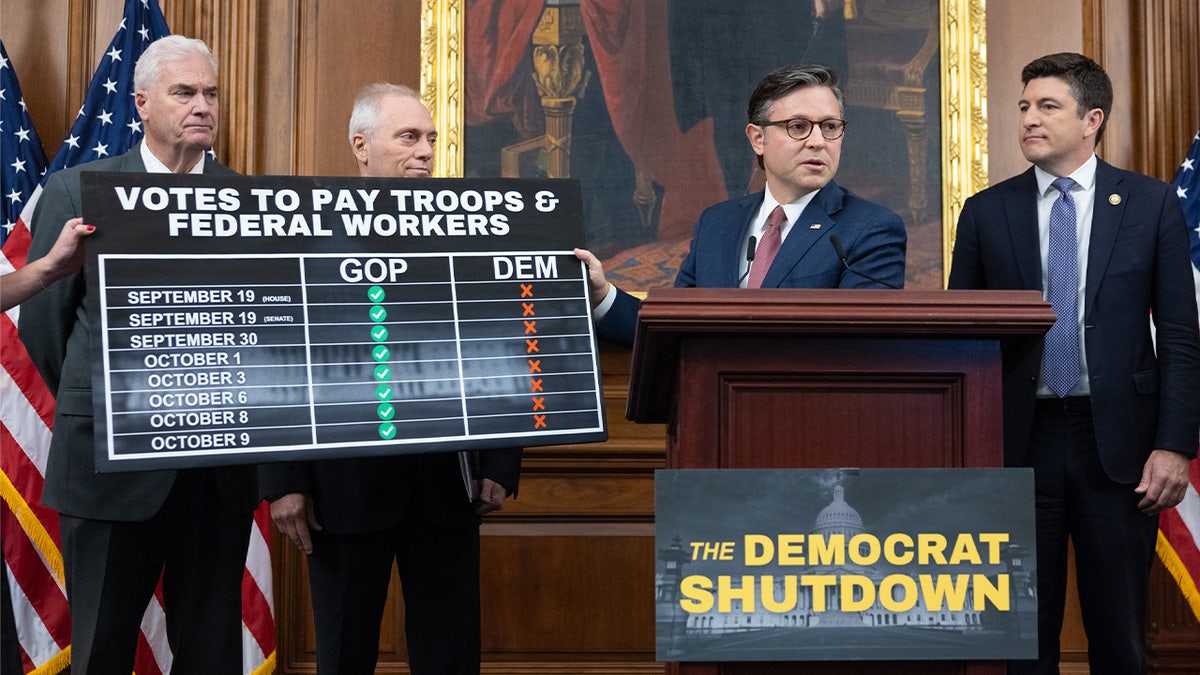
Speaker of the House Mike Johnson is joined by Majority Leader Steve Scalise, Whip Tom Emmer and Brian Steil for a press conference on the tenth day of a government shutdown Oct. 10, 2025, in Washington, D.C. (Anna Rose Layden/Getty Images)
CLICK HERE TO GET THE FOX NEWS APP
The pause in funding stems from the Oct. 1 shutdown after Senate lawmakers failed to reach a spending agreement in time for the end of fiscal year 2025 after a short-term extension of fiscal year 2025 funding, aimed at keeping the government open through Nov. 21, passed the House mainly along party lines earlier in September.
Republicans like Vought have blamed the shutdown on Democrats, arguing they refused to fund the budget in an attempt to reinstate taxpayer-funded medical benefits for illegal immigrants through Democrat lawmakers’ continuing resolution, which would include extending the expiring Obamacare tax credits.
Democrat leadership has disputed the claims, saying that Trump and Republican lawmakers are really behind the shutdown.
Fox News’ Amanda Macias and Emma Colton contributed to this report.
donald trump,elections,democratic party,democrats senate,republicans,politics,infrastructure across america
INTERNACIONAL
Elección clave en Bolivia: un candidato de centro y uno de derecha pugnan por gobernar un país en un punto terminal después de 20 años de populismo

 CHIMENTOS2 días ago
CHIMENTOS2 días agoLaura Ubfal mostró una escandalosa foto de Mauro Icardi con la hija de Benjamín Vicuña

 POLITICA3 días ago
POLITICA3 días agoFabiola Yañez regresó al país, le restituyeron la custodia policial y busca colegio para su hijo

 CHIMENTOS2 días ago
CHIMENTOS2 días agoSe confirmó de qué murió la famosa actriz Diane Keaton a los 79 años: «Murió a causa de una neumonía»

